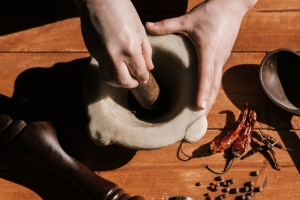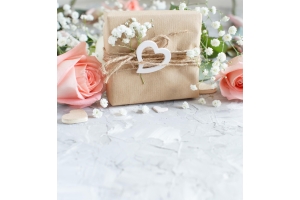Why Is Traditional Handcrafted Polish Pottery Highly Regarded?

Polish pottery has gained global recognition and demand. But have you ever wondered why it's held in such high esteem?
While many factors play a role in its unyielding popularity, Polish pottery is mainly recognized for four aspects. These are:
- its rich heritage
- breathtaking designs
- meticulous manufacturing techniques
- unparalleled durability
Given all these remarkable qualities, it's hard not to appreciate the artistry and craftsmanship that goes into every piece of pottery made in Bolesławiec.
This article explores these elements in-depth to shed light on the matter.
Get ready to embark on a journey of innovation and cultural appreciation as we delve into the world of traditional Polish pottery!
Rich Cultural Heritage
Polish pottery is steeped in a rich cultural heritage. Each handcrafted piece tells a story that harks back to the country's long-standing tradition of pottery making.
This tradition has been preserved through generations, keeping the unique techniques and designs of Polish pottery alive.
Pottery making in Poland has a deep history that dates back to the 14th century.
Initially, the craft borrowed influences from neighboring countries like Germany, Hungary, and the Netherlands.
With time, Polish potters established their distinct style. This style is known for its intricate patterns, vibrant colors, and unwavering attention to detail.
The 'peacock's eye' pattern is a unique feature of traditional Polish pottery.

This bold design, dominated by blue and green hues, draws inspiration from the natural beauty of peacock feathers. It symbolizes prosperity and good fortune, making it a popular choice for celebratory occasions.
The exceptional craftsmanship of Polish pottery is a marvel. Artisans skillfully shape the clay into various forms, which include bowls, plates, teapots, and vases.
The cultural heritage of traditional handcrafted Polish pottery is worth cherishing and celebrating. It's a tribute to the creativity, skill, and passion of the artisans who keep this timeless tradition thriving.
Breathtaking Designs and Patterns
Traditional Polish pottery will captivate you with its intricate and vibrant designs. Each piece is handcrafted, reflecting Poland's rich cultural heritage.
Bowls, plates, and other pottery pieces are meticulously detailed, showcasing the talent of the artisans.
The unique technique used in their creation is hand-stamping. Artists apply the complex motifs onto the pottery using small sponges or hand-carved stamps.
The result? Functional pottery that doubles as artwork.
One of the most well-loved designs is a pattern of tiny dots, symbolizing unity and harmony. These, along with other designs, reflect the creativity and innovation of Polish artisans.

What makes Polish pottery stand out are its vibrant colors. Artists creating these pieces use bold hues like blues, greens, reds, and yellows.
The striking colors are due to a special clay found only in Poland's Bolesławiec region. The clay is mixed with natural pigments and then baked at high temperatures. The outcome is beautiful, durable, and long-lasting pottery.
The impressive designs and patterns of traditional Polish pottery showcase the artisans' skill, creativity, and passion. Whether you're a collector or someone who appreciates fine craftsmanship, Polish pottery will leave a lasting impression.

Meticulous Handcrafting Techniques

Understanding the intricate artistry behind traditional Polish pottery requires a deep dive into the essential techniques that shape this revered art form. These methods, handed down through generations, blend skill, precision, and detail-orientation.
Let's explore the necessary steps to create these works of art:
- Hand Throwing: First, experienced potters shape clay on a spinning wheel. They use their hands and basic tools to mold the clay into the desired shape. This technique offers a high level of control and accuracy. It results in pottery with flawless shapes and proportions.
- Carving and Piercing: After the formation of the piece, detailed designs are skillfully carved or pierced into the surface. It requires specialized tools, a steady hand, and a sharp eye for detail. The slightest mistake can ruin the entire piece. The resulting patterns and motifs lend depth and texture to the pottery, making every piece truly one-of-a-kind.
- Hand Painting: After the carving and piercing process, artisans apply vibrant hand-painted designs using natural pigments. Each stroke of the brush is thoughtfully positioned to create intricate patterns that mirror Poland's rich cultural lineage. The use of natural pigments ensures the colors stay bright and don't fade with time.
- Glazing and Firing: Once painting is complete, a transparent glaze is applied to the pottery to give it a glossy finish and safeguard the detailed designs. The piece is then fired in a kiln at high temperatures. This process hardens the clay and fuses the glaze with the surface, creating a durable and lasting piece of art.
These painstaking handcrafting techniques distinguish traditional Polish pottery from mass-produced ceramics.
The skill and attention to detail involved in each piece are truly remarkable. It results in pottery that's not only visually striking but also steeped in history and tradition.
Unparalleled Durability and Functionality

Traditional Polish pottery is known for its exceptional strength and resilience. Made from high-fired stoneware clay, this pottery is tough and resistant to chips and cracks.
Not only is Polish pottery durable, but it also offers unmatched functionality. Each piece is crafted thoughtfully and serves multiple purposes.
You can use it to cook and then serve the meals. The thick walls of the pottery distribute heat evenly, ensuring your food is cooked to perfection.
Cleaning up after using Polish pottery is a breeze. The smooth glaze on the pottery makes it easy to clean, eliminating the need to scrub off stubborn stains.
Final Thoughts
Thanks to its numerous qualities, Polish pottery is highly regarded and sought after by enthusiasts and collectors alike.
Yet, its popularity boils down to four general points: its rich cultural heritage, breathtaking designs, meticulous handcrafting techniques, and unparalleled durability.
It's fascinating how something so seemingly simple can hold such significance and demand.
The irony lies in the fact that while our modern world is obsessed with mass-produced, disposable items, there's still a deep appreciation for the artistry and craftsmanship of traditional pottery.
It reminds us of the value of slowing down, cherishing our cultural roots, and embracing the beauty of handmade treasures.
Frequently Asked Questions
What are some popular traditional Polish pottery designs and patterns?
You can choose from many popular traditional handcrafted Polish pottery designs and patterns, ranging from intricate floral motifs to geometric shapes.
These designs are highly regarded for their timeless beauty and attention to detail.
How long does it take to create a single piece of handcrafted Polish pottery?
Crafting a single piece of handcrafted Polish pottery takes time, precision, and skill. From molding the clay to painting intricate designs, it's a labor of love that can take several weeks to complete.
What materials are commonly used in the production of Polish pottery?
Common materials used in the production of Polish pottery include white clay, pigments, and glazes. These materials are carefully chosen for their quality and durability, ensuring that each piece is not only beautiful but also long-lasting.











Validate your login
Sign In
Create New Account